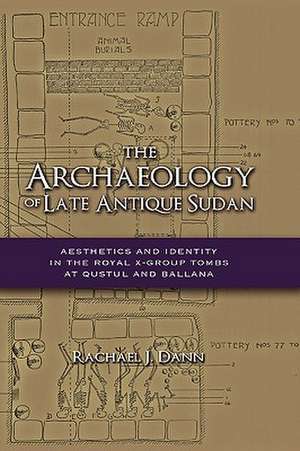The Archaeology of Late Antique Sudan: Aesthetics and Identity in the Royal X-Group Tombs at Qustul and Ballana
Autor Rachael J. Dannen Limba Engleză Hardback – 30 sep 2009
Preț: 653.75 lei
Preț vechi: 710.60 lei
-8% Nou
Puncte Express: 981
Preț estimativ în valută:
125.10€ • 136.43$ • 105.48£
125.10€ • 136.43$ • 105.48£
Carte tipărită la comandă
Livrare economică 24 aprilie-08 mai
Preluare comenzi: 021 569.72.76
Specificații
ISBN-13: 9781604976236
ISBN-10: 1604976233
Pagini: 310
Ilustrații: 1
Dimensiuni: 152 x 229 x 21 mm
Greutate: 0.63 kg
Ediția:New.
Editura: Cambria Press
ISBN-10: 1604976233
Pagini: 310
Ilustrații: 1
Dimensiuni: 152 x 229 x 21 mm
Greutate: 0.63 kg
Ediția:New.
Editura: Cambria Press










